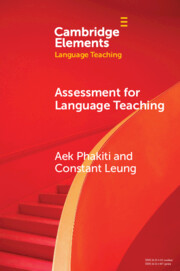Element contents
Assessment for Language Teaching
Published online by Cambridge University Press: 01 May 2024
Summary
Keywords
Information
- Type
- Element
- Information
- Series: Elements in Language TeachingOnline ISBN: 9781108934091Publisher: Cambridge University PressPrint publication: 30 May 2024
